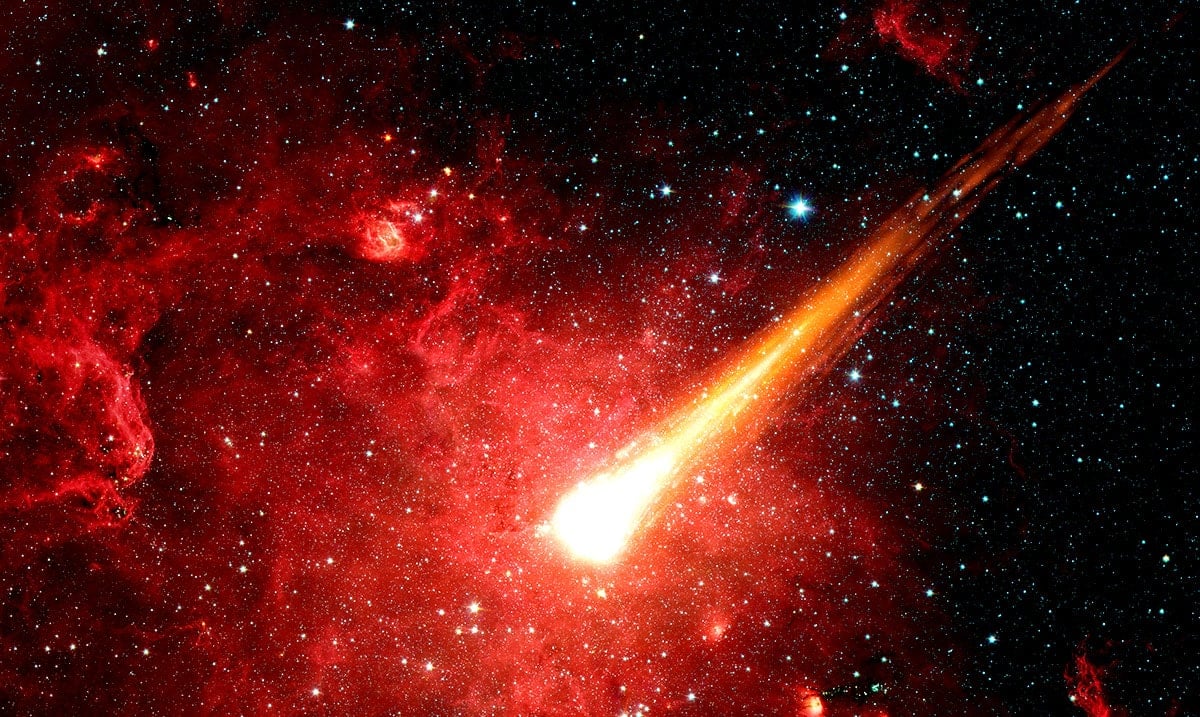A remarkable comet with distinctive “horned” features is now gracing the night sky and might even align with the upcoming total solar eclipse on April 8, 2024.
Visible in the northern hemisphere’s nocturnal expanse, Comet 12P/Pons-Brooks is captivating observers. This cosmic body, a mix of dust, rock, and ice, emits gas as it nears the sun, forming a luminous aura or coma around itself. The comet’s recent outbursts have bestowed it with a horned silhouette, leading to intriguing nicknames like the “Devil Comet” and “Millennium Falcon.”
For astronomy enthusiasts eager to witness the spectacle of Comet 12P/Pons-Brooks during the total solar eclipse, consider “The Backyard Astronomer’s Guide” by Terence Dickinson and Alan Dyer. This comprehensive guide covers everything from the basics of stargazing to advanced observational techniques, ensuring you’re well-prepared to spot the comet amidst the eclipse’s unique conditions.
This comet, making its journey to the inner solar system every 71 years, is anticipated to approach the sun most closely on April 21, reaching a distance of about 74.4 million miles (119.7 million kilometers). Its proximity to the sun during the April 8 solar eclipse—which will be observable from Mexico, 15 U.S. states, and Canada—enhances its visibility against the darkened sky, as noted by EarthSky.org. “During the eclipse’s totality, Venus will emerge as the brightest planet on one side of the sun, while Jupiter appears as the second-brightest on the other. And, if bright enough, Comet Pons-Brooks could be spotted between Jupiter and the sun, albeit nearer to Jupiter,” EarthSky.org explains.
Additionally, the “Celestron SkyMaster Giant 15×70 Binoculars with Tripod Adapter“ can provide a spectacular view of the comet against the darkened eclipse sky. With their large aperture, these binoculars are ideal for astronomical viewing, offering bright, detailed images of celestial phenomena.
A solar eclipse transpires when the moon interposes between the Earth and the sun, casting a shadow on the Earth. During totality, the moon and sun appear almost identical in size, completely obscuring the sun for a brief period. This could allow for the comet to be seen with the naked eye, or at least through binoculars, depending on its luminosity on the day.
The comet’s visibility during the eclipse hinges on its brilliance at that time. Should the comet experience a significant outburst, its halo could expand, making it appear more luminous. While comets appearing during total solar eclipses is not unprecedented, such coincidences are relatively infrequent.
For those interested in capturing this astronomical event through photography, “Astrophotography for the Amateur” by Michael A. Covington offers invaluable tips and techniques. Whether you’re a novice or experienced photographer, this book will help you preserve the stunning sight of the comet and the solar eclipse for posterity.
For those eager to witness the solar eclipse on April 8, or to catch a glimpse of Comet 12P, it’s crucial to consult guidelines on safely observing the sun. Protective measures, like solar eclipse glasses and solar filters for optical devices, are essential during the eclipse’s partial phases.
Stay informed with the latest updates on the eclipse through our live blog, and don’t miss the chance to watch the total eclipse as it happens live on Space.com.
If you want over 200+ ideas, phrases, and text messages to drive your man wild with desire for you, make sure to check out my new program, Language of Desire. I give you step-by-step instructions and tons of exact words to use to get exactly what you both want in and out of the bedroom.
P.S. The reason so many men “pull away” from women is because
women don’t understand this naughty secret about men. . .


